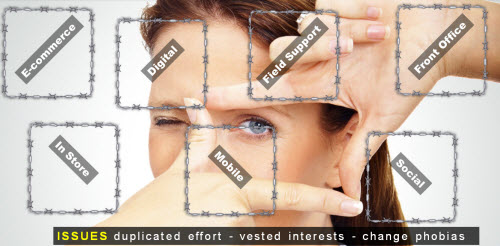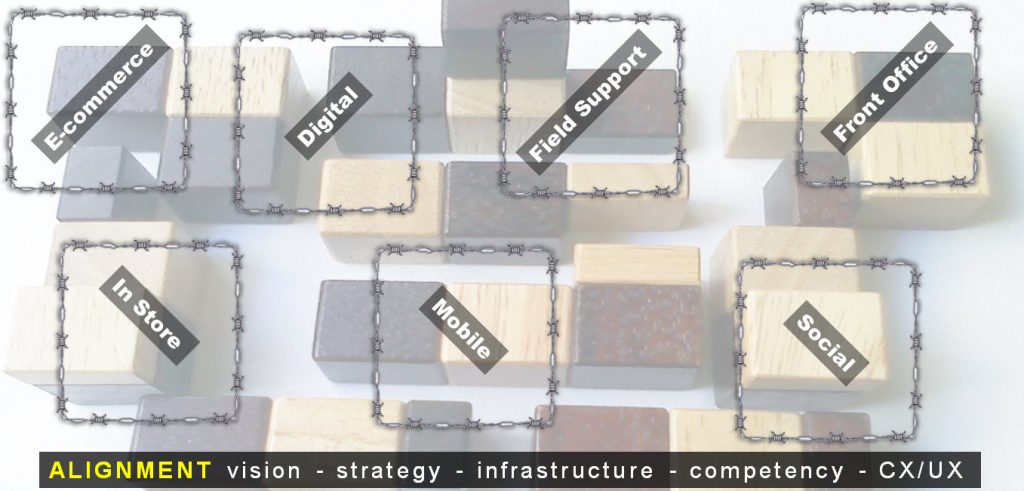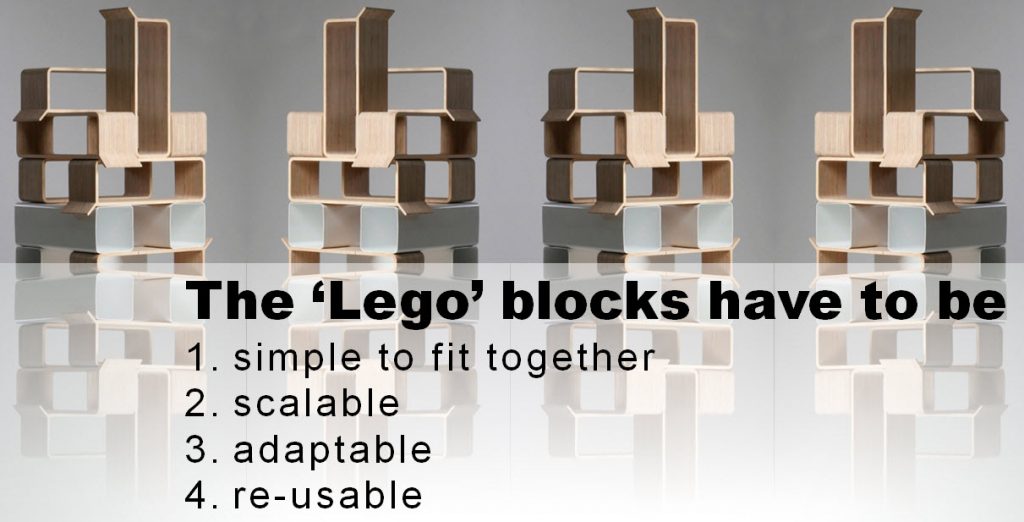
We are currently in the era of digital disruption. It is comparable to other great periods of social transformation, such as the Industrial Revolution and prior to that, the emancipation of knowledge catalysed by the printing press.
In each period, the status quo was blown out of the water and a new order established.
Once In A Lifetime
In today’s version, it is the ongoing integration of technologies that is tipping the balance and causing a changing of the guard. And as with all truly impactful transformations it affects all. In our case that includes brand and customer, brand and employee, B2C and B2B. Across every type of market, public or private and every geography.
Put simply, a digital world changes the way we work and live. It compresses, accelerates and scales how events take place. It enriches, connects and enables entirely new ways of doing things. Running through the centre of any of these new scenarios are the themes of connectivity and real time information.
For sure BYOD (bring your own device) is extra complexity and an unwelcome new reality for CIOs to manage. But it reflects the fact that the world can now carry the world in its pocket. This mass consumer empowerment was perfectly channelled during the Jobs era of Apple domination catalysing the world wide distribution of post pc technology.
Others have now caught up and both smartphones and tablets are currently in the classic phase of getting cheaper and better over ever shortening cycles of intensive competition. The connected customer has arrived. Hence we now have a world of omni-channel retailing, social customer service, multi- device ownership, showrooming and real time personalisation.
And that’s before our cars and white goods start checking themselves in for a service before we even recognise the symptoms.
New Behaviours: New Responses
The new generation of customer is autonomous and expects brands to support that behaviour.
Much digital ink has already been spilt exploring other associated changes in consumer behaviour. We know that brand trust has declined. Instead we favour the views of family, friends and authentic online reviews.
We know that reliance on brands for information has equally weakened. Customers help other customers across the lifecycle. From awareness to support. In some respects the brand now acts as tier 3 support. Involved only when it gets complicated.
In response, brands are redefining their value from simple information gatekeepers to entertainers, impresarios, experience generators and custodians of knowing what switches your lights on. They need to in order to stay relevant.
Just go visit any recently refurbished flagship stores to witness this change of emphasis first hand. Think about what Angela Ahrendts meant when she said that there is no distinction between offline and online. Her stores mirror the design of Burberry’s online properties.
One of the best places to test the zeitgeist is Linkedin nomenclature. A few years ago there were many plenty proud enough to describe themselves as ‘Customer Service’ Directors. Today they are a diminishing breed. All hail the ‘Customer Experience’ Director instead. Whether cosmetic or catalytic, they way we name ourselves reflect the changing emphasis in what matters to business and personal success.
This buying behaviour and corresponding new style courtship from brands is not a pure retail phenomena. Far from it. B2B is impacted just as radically. Although the purchase process appears more objective and formal with all the RFIs and RFPs flying around, the behavioural economics insight that we are basically irrational in our decision making holds true. People buy from people. That’s why so much golf still gets played in B2B!
But certain buyer behaviour has changed. Each person within a DMU (decision maker unit), the supposed group who influences a B2B purchasing decision are also B2C buyers in their own personal lives. Does one influence the other? In other words has the B2B buyer become more autonomous as a result?
Here is the evidence. Year on year, the trend is towards contacting brands later and later in the purchasing cycle. More and more of the initial research can be answered by connecting into other buyers’ experiences.
“B2B customers completed nearly 70% of a typical purchasing decision (researching solutions, ranking options, setting requirements, benchmarking pricing) before even having a conversation with a supplier .”
Source: 2013 Corporate Executive Board study of more than 1,400 B2B customers
While B2B purchasing will retain its own characteristics and disciplines, it is being driven by the same forces. Buyers no longer look exclusively to branding and use cases as proxies for quality. Today they can use ‘in use’ experiences to build their perceptions of brand messaging. And stupid is the brand whose messaging is at odds with the published accounts of ‘it does/does not do what it says on the tin’.
When buyers eventually come into view ready to bargain, they are armed to the teeth and clear on what and who represents ‘best value’ at that moment.
Implications Of Rising To The Demands Of The Connected Customer
We all like simple catchphrases that trip off the tongue. For instance, “Engaged Customers Need Engaged Employees” is currently part of the CX movement’s core theology. Here’s another one. “Connected Customers Require Connected Brands”. Unfortunately, such simplicity masks the complexity of making it happen.
Digital disruption has put the customer first in terms of delivering a working solution. Squish the cloud, mobility and social into the form factor of a smartphone and you have a pretty awesome tool with which to strut your autonomy. Brands on the other hand do not start from that point of cohesiveness. They bring baggage with them. It’s called silos/functions/turf wars/HQ vs. Regions/Sales vs. Marketing. The list goes on.
The understandable and very human motivation is trying to control the complexity of large scale organisational life that globalisation has left in its wake. “Let’s just focus on our patch”. Parochial incentivisation and weak corporate storytelling has compounded this insular view of life even further.
This context is tough to transcend. Add more disciplines and more silos appear. Put a digital team into this mix and they will end of behaving functionally even though their whole mission is essentially holistic.
Part of the solution lies in the mantra of One Agenda and the alignment this encourages. Leaders of wannabe digital brands need to invest in a relevant mix of vision, strategy, infrastructure and competency: paying particular attention to both Customer Experience (CX) and User Experience (UX) as key hygiene factors.

Of course the irony in all this is trying to get a functional business to pivot into being an aligned business. The difficulty of pouring new wine into old wineskins is ancient wisdom. But needs must. Customers are already outside tapping their digital fingers in impatience. Brands that get it, such as Amazon and Google are hoovering up. Meanwhile traditional market leaders dither in their attempt to act as connected entities.
More often than not the gravitational pull of habitual behaviours keeps them tethered. Some break free to regenerate as digital brands. Others die as their irrelevance outweighs their value for the evolving needs of their customers.
Any Real Leaders In The House?
This is the time when organisations need effective leadership. Their very survival depends on it.
Something every leader should hold in the back of their mind as ongoing context is the accelerating speed of change. Some argue that the swap out from analogue to digital is causing this level of ongoing disruption. They hope once we arrive things will settle down. Others look further out and see it continuing. Everything spins faster and therefore market life-cycles are permanently accelerated.
This leads to the notion of everything being in ‘ongoing beta’. We are constantly evolving the next iteration of our value proposition. With the caveat of course that its quality must always meet expectation. Charlene Li is a well known commentator and owner of the social consultancy Altimeter. In her latest book on digital disruption, she considers how brands can build deconstruction into their ‘business as usual’ lifecycle. This is because the ingredients of past success can be fatal to understanding the ingredients of success for the next cycle. Those who surf the wave of perpetual betas no doubt agree with her.
So how does this translate into practical advice? Let’s just take one ingredient from the list mentioned earlier: the matter of infrastructure. Or put differently, the ability to provide equivalent corporate benefit that the smartphone has already given the consumer.
Perpetual beta is a fact of life for CIOs. Somehow they need to deliver reliable, secure performance that looks attractive, is easy to use and meets an ever changing functional agenda as the business tries to keep pace with evolving customers. No easy task and quite different from the process and output of recent generations of IT effort.
Hence the need to prioritise certain attributes. In terms of building an ecosystem that bridges silos, the building blocks should be as follows.

Why are these important? They help prioritise the whole as being more valuable than the sum of the parts: the ambition is nothing less than an enterprise wide integration of communication, data and workflow.
This is an ecosystem approach as opposed to best of breed or bespoke integration. In the world of perpetual beta, it matters more that things join up and can be easily and securely accessed than it is to over polish a single system.
This approach pays dividends. Eventually, a digitally supported set of customer journeys emerge. These provide frameworks for the most important engagements between customer and brand. If they have been architected with the ‘Lego’ blocks previously suggested, they exist in a state of ‘permanent beta’, capable of being easily and rapidly adapted as customer digital behaviour evolves.
Concluding Thoughts
Serving today’s customer requires brands to get onto the same footing. That means translating all the major customer journeys into digital workflow with integrated communications and data to support both autonomous and supported engagement.
To keep up, employees need the same empowerment which means spreading the same capability internally as well as externally. Whether brands can make their tech as self learning as smartphones remains to be seen. Simplicity is the hardest of design tasks. If they do, then adoption should be organic and the silos will take care of themselves. Otherwise the medicine of full alignment as previously mentioned is highly recommended as plan B.





Martin,
Great post but it left me with a question….imagine I am a legacy business, where do I start? Do I wipe the slate clean and start with a completely new set of systems or do I set up a new parallel set of systems that I gradually migrate the whole business to and adopt an approach, like Charlene Li advocates, of perpetual beta ?
Adrian
Adrian,
As usual a pertinent question. I think you imagine yourself anew but build incrementally and in Charlene style keep riding the wave.
Martin